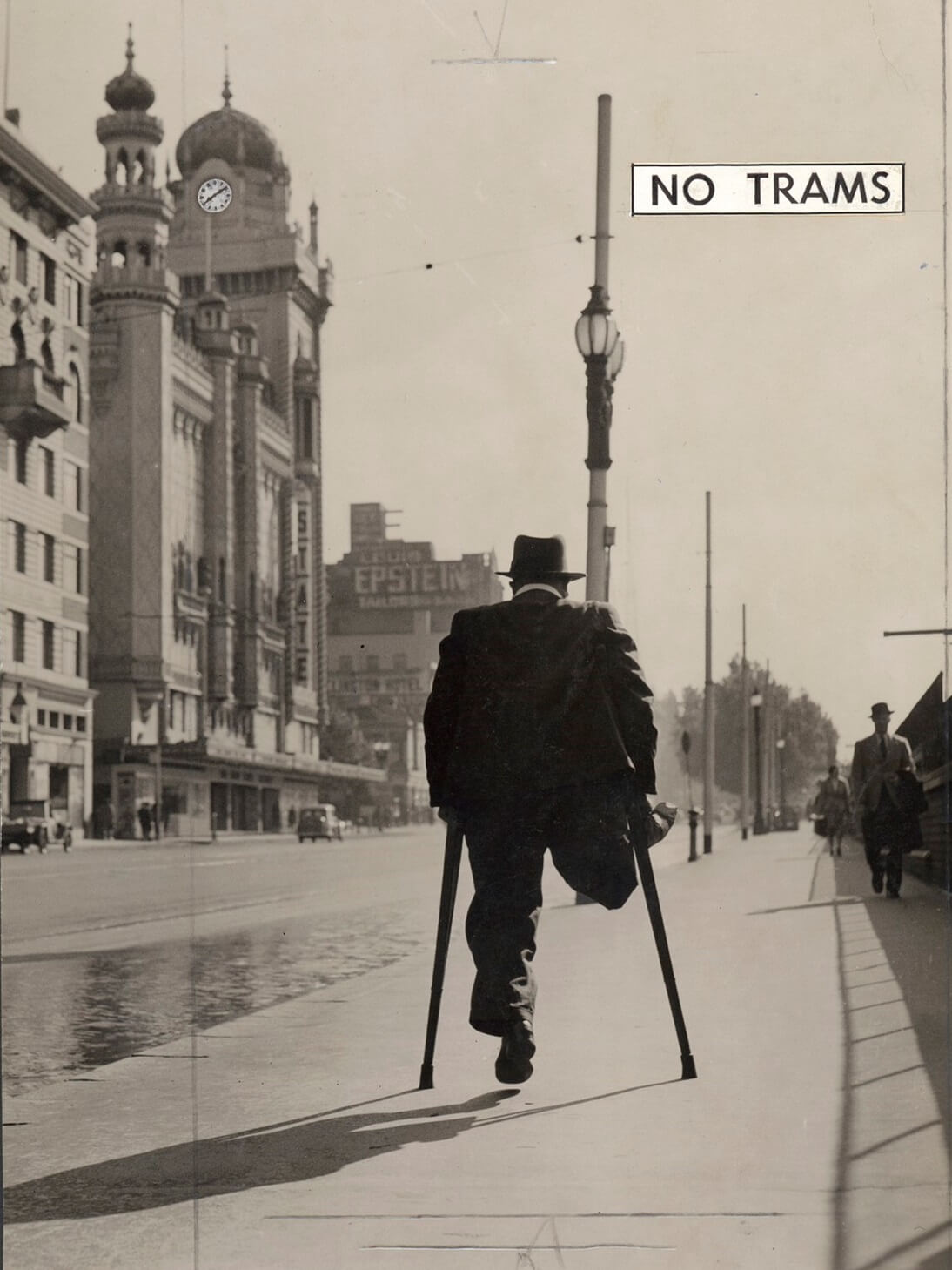Melbourne was essentially a low-rise city until the 1880s, but this decade of booming land prices saw buildings begin to creep upwards. With twelve storeys, the Australian Building, built from 1888-9, was Australia’s tallest building until 1912, when it was eclipsed by the Culwulla Chambers in Sydney. From the late 1920s other ‘skyscrapers’ began to dot Melbourne’s skyline, beginning with the T & G building (10 storeys) in 1929 and the Manchester Unity Building (with 12 storeys) in 1932. Office workers in these buildings were propelled to their lofty eyries by pneumatic lifts (the Manchester Unity Building had three). It was said that when the Australian Building first opened, Melburnians used to visit it for the sheer thrill of riding in the lift.
The lifts themselves were operated by elevator operators or lift attendants, often called simply ‘lift men’. Later, some of these men were returned servicemen with war injuries. The Old Treasury Building employed Harry Cull in the late 1940s for example, despite the fact that the lift itself was very small. Lift attendants opened and closed the heavy metal safety grilles of the elevator, controlled its speed and directed passengers to the correct floors. Like the tea ladies, lift men generally got to know the workers in their buildings and could chat to them as they conveyed them to work. In addition to government and commercial buildings, the larger department stores all employed lift attendants, who also informed shoppers of the merchandise to be found on each floor and assisted mothers with prams. Some of these attendants were women. The fashionable department store Georges for example advertised in May 1949 for a ‘smart, intelligent, well-spoken young woman’ to act as a lift attendant. (The Argus, 14 May 1949) But by the 1980s the days of the lift attendant were numbered. Automatic elevators, developed in the 1970s, began to be installed in newer buildings, then retrofitted into older structures, although many firms initially retained lift attendants for their customer service value. David Jones continued to employ elevator attendants until the 1990s, but most had gone by the end of the century.
Mr Harry Cull, liftman from the Treasury Building, walking along Flinders Street during a tram strike, 1948
Reproduced courtesy State Library Victoria
Henry William Cull was a former farm labourer, whose leg was injured on active service in France in 1916. It was amputated in 1917, forcing him to find other employment.

